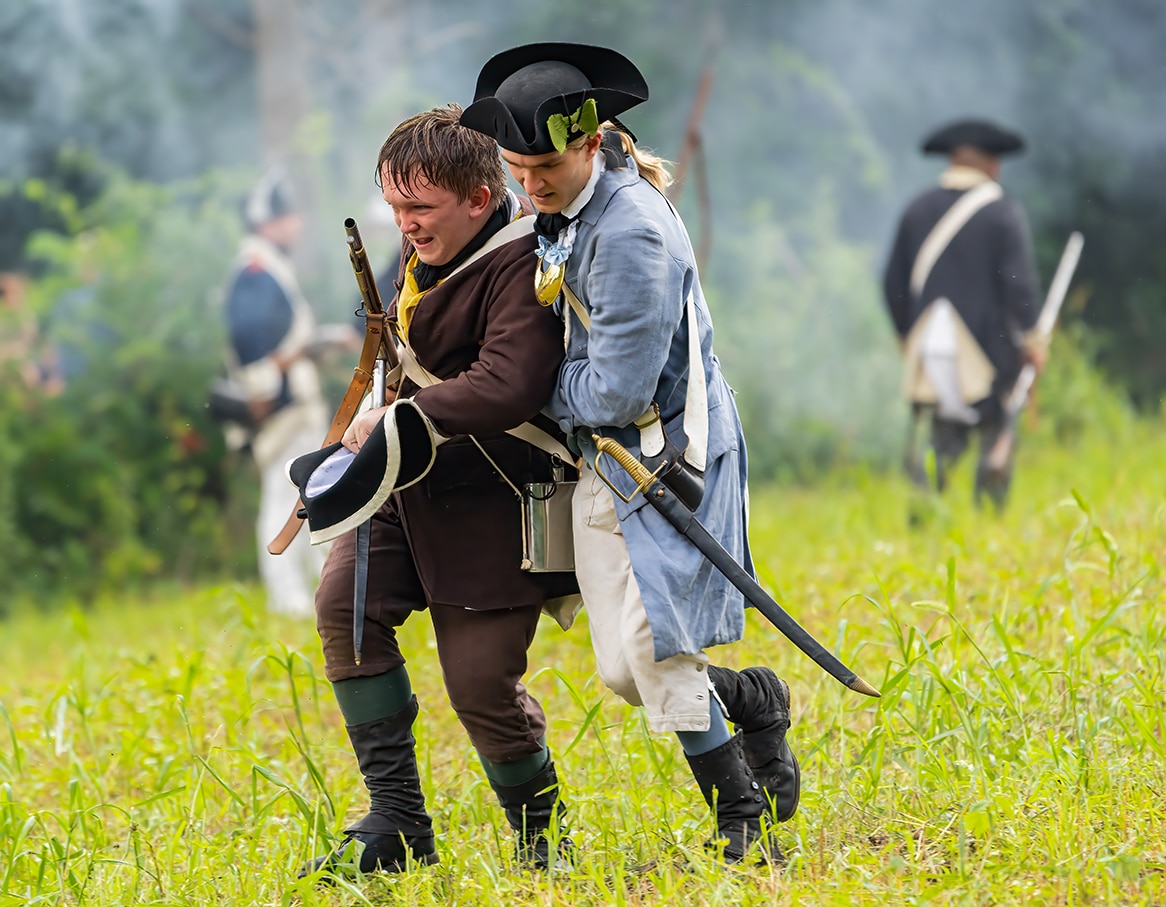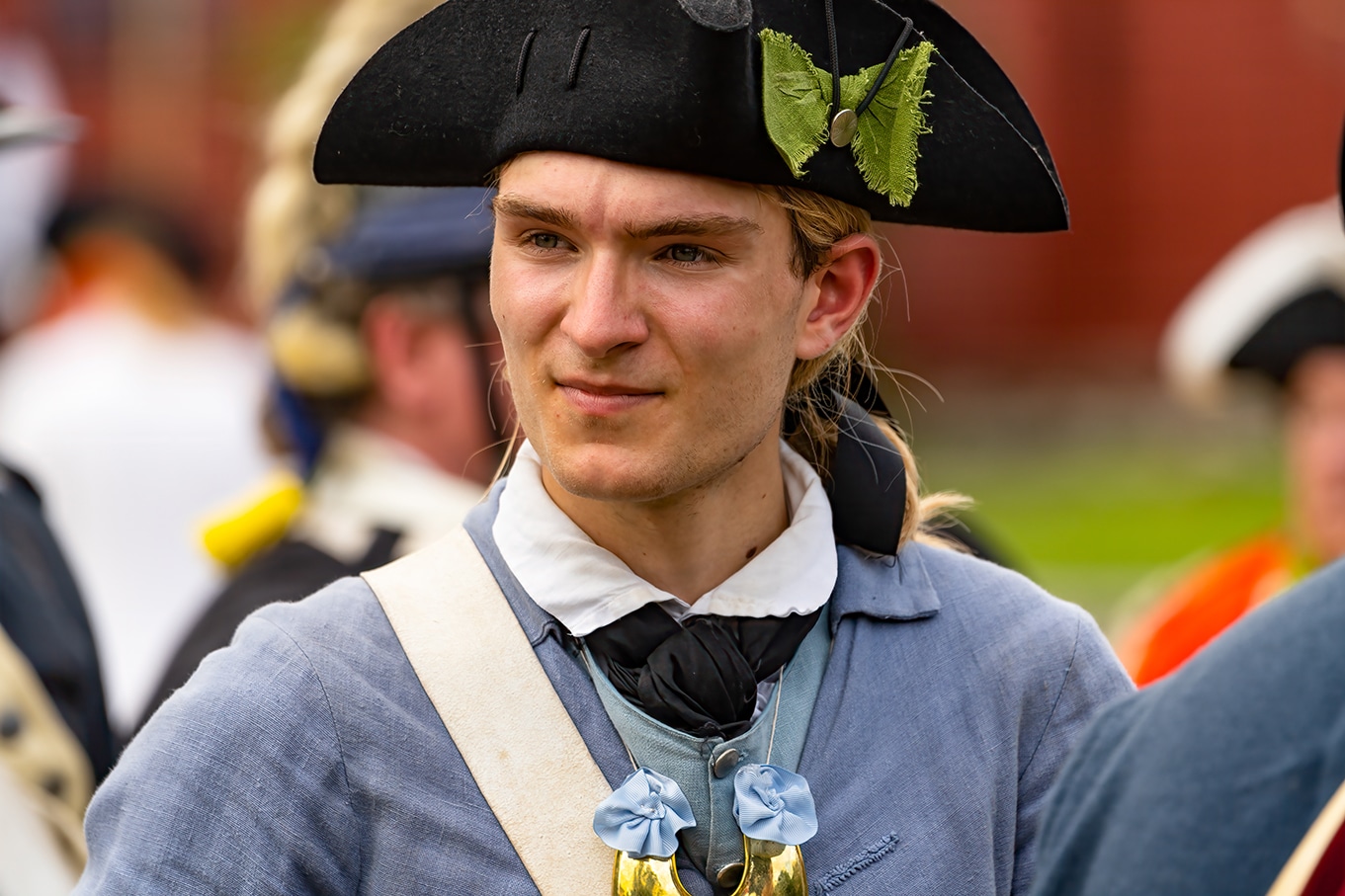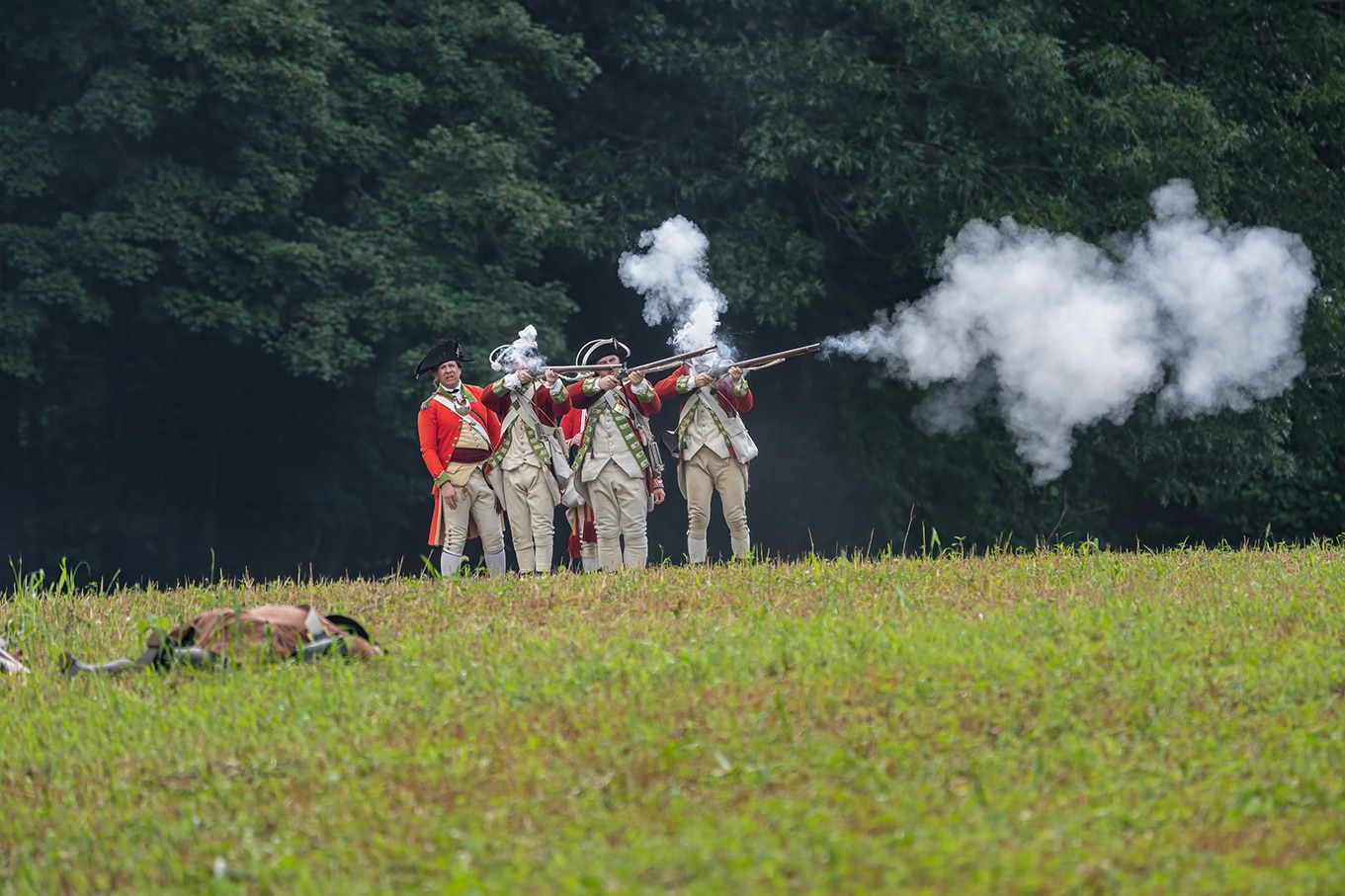Many people know a little about the Battle of Ridgefield from historical markers on North Salem Road and Main Street or because they’ve seen the famous cannonball embedded in the Keeler Tavern. However, residents both old and new will soon be able to get first-hand experience of what the battle may have actually been like.
 Ridgefield has regularly commemorated this event, but the 245th anniversary of the Battle this year will be special. The weekend of April 29th – May 1st will include both a reenactment and the reburial of the remains of four young men, found together in a shallow grave just off Main Street in 2019 and believed to have fallen in the Battle of Ridgefield.
Ridgefield has regularly commemorated this event, but the 245th anniversary of the Battle this year will be special. The weekend of April 29th – May 1st will include both a reenactment and the reburial of the remains of four young men, found together in a shallow grave just off Main Street in 2019 and believed to have fallen in the Battle of Ridgefield.
As that discovery illustrated, even after two centuries historians are still uncovering more about the Battle of Ridgefield. Under a National Park Service American Battlefield Protection Program grant obtained by the Ridgefield Historical Society, researchers are compiling the best knowledge obtainable about the men who fought and died during the battle, the effect on the civilian population, and how the only inland battle in Connecticut affected subsequent events. It will point the way for archaeological exploration as well as discussion of how Ridgefield might embrace this heritage.
The History
The Battle followed Major General William Tryon’s raid on the American depot in Danbury. General Tryon, with Brigadier Generals Sir William Erskine and James Agnew, led nearly 2,000 men on this mission. Sentries had sounded the alarm as the British disembarked from ships off Westport on Friday evening, April 25. Reaching Danbury on Saturday afternoon, the British looted and burned the Continental Army stores, then spent the night in town.
Expecting attacks, General Tryon called for an early Sunday departure and chose to march through Ridgefield. The Americans had 200 troops led by Major General David Wooster and 400 commanded by Brigadier Generals Gold Selleck Silliman and Benedict Arnold, who would attempt to cut off the British if they marched south or join General Wooster if the British went west. Scouts soon reported the British moving toward Ridgefield.
Skirmishing broke out in Ridgebury as more American combatants arrived; meanwhile, General Wooster and his soldiers, now totaling close to 500, closed in on the British from Barlow Mountain. The first of two engagements occurred along North Salem Road near Barlow Mountain Road, when General Wooster’s division overran the British rear guard, capturing prisoners and wagons loaded with material. A second attack, close to Tackora Trail, left General Wooster mortally wounded.
By then, the vanguard of the British was nearing the village, where a barricade at the northern end of Main Street had been erected. Five hundred Americans were flanked and overwhelmed by the British and another general was nearly lost as Arnold’s horse was shot from beneath him and he scrambled to escape.
 The Americans would withdraw, continuing to harass Tryon’s troops as the British cleared the village, burning some structures as they went. They eventually made camp south of the village and the next day marched back to the ships off the coast near Westport.
The Americans would withdraw, continuing to harass Tryon’s troops as the British cleared the village, burning some structures as they went. They eventually made camp south of the village and the next day marched back to the ships off the coast near Westport.
The British had learned that an inland invasion did not yield an up-swelling of Loyalist support and that going beyond the range of their ships’ guns in enemy territory was a dangerous enterprise. The war would continue for years, but the British would never again attempt an inland attack in Connecticut.
The Events
 Ridgefield First Selectman Rudy Marconi chairs the steering committee for the April 29th – May 1st commemoration, with co-coordinators, Tracy Seem, Ridgefield Historical Society President, and Isabel Griffith, Town of Ridgefield Intern. The Friday evening kick-off on April 29th, organized by the Historical Society, will include a panel discussion featuring an update on the skeletons and the subsequent research conducted under the N.P.S. grant. The Ridgefield High School Orchestra will perform and there will be a reception.
Ridgefield First Selectman Rudy Marconi chairs the steering committee for the April 29th – May 1st commemoration, with co-coordinators, Tracy Seem, Ridgefield Historical Society President, and Isabel Griffith, Town of Ridgefield Intern. The Friday evening kick-off on April 29th, organized by the Historical Society, will include a panel discussion featuring an update on the skeletons and the subsequent research conducted under the N.P.S. grant. The Ridgefield High School Orchestra will perform and there will be a reception.
The Brigade of the American Revolution led by the 5th CT Regiment will set up camp at Jesse Lee Memorial United Methodist Church and the British Brigade Crown Forces led by the 54th Regiment Afoot will encamp at Ballard Park.
The battle reenactment will take place Saturday from 11 to noon, with Main Street closed from 10:30 to 3.
Other activities that day will include Battle of Ridgefield Walking Tours, events at the Keeler Tavern Museum & History Center, and an archaeology workshop at the Ridgefield Historical Society’s Scott House. The Musket Ball, an event chaired by Harriet Riser and Stacey Schibli will take place at the Lounsbury House Saturday evening, and will include dinner, dancing, entertainment, and VIP camp visits with reenactors.
The weekend’s finale will be the reburial of the four soldiers’ remains following a horse-drawn carriage procession to the Olde Town Cemetery; period caskets are being donated by Kane Funeral Home. The Graveyard Committee has organized the burial with military honors that will include representatives of the town, American Legion Post 78, and Commander Crawford of the 5th CT Regiment.
Details of all events will be available on town website ridgefieldct.org and ridgefieldhistoricalsociety.org. •